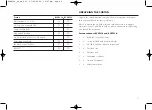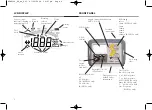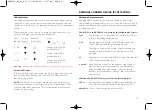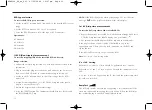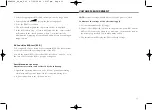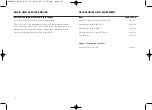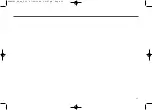
VOLTAGE MEASUREMENT
1. Select the appropriate RCD rated current on the top range knob.
2. Select the RAMP
test on the lower range knob.
3. Press the [TEST] test button
4. The RCD should trip and the trip current will be is displayed.
5. If the RCD fails to trip, >***mA is displayed and the contact symbol
will remain in the closed position, where *** mA indicates the
maximum RCD tripping current allowed and will vary depending on
range selected.
DC Sensitive RCD test [RCD ]
D.C. sensitive RCDs are tested as per standard RCDs. The RMS current
used is
√
2 x the rated operating current of the RCD.
As with the normal RCDs, these should be tested at 0° and 180°, or in
the case of DC sensitive RCD’s, positive or negative.
Possible sources of error
Measurement results can be affected by the following:
1. Significant operating errors can occur if loads, particularly rotating
machinery and capacitive loads are left connected during tests.
2 A poor connection to the circuit under test.
NOTE:
Measured voltage should not exceed 300V phase to earth.
To measure the voltage of the electrical supply:
1. Set the instrument to the [V] range.
2. Connect the GREEN OR (L0) lead to the protective Earth (PE) and the
RED or (L1) lead to the phase to be measured. (Alternatively connect
the mains plug test lead to a suitable mains outlet).
3. The instrument will display the Phase to Earth voltage.
13
RCDT300_UG_en_V01 07/05/2004 12:07 pm Page 13





